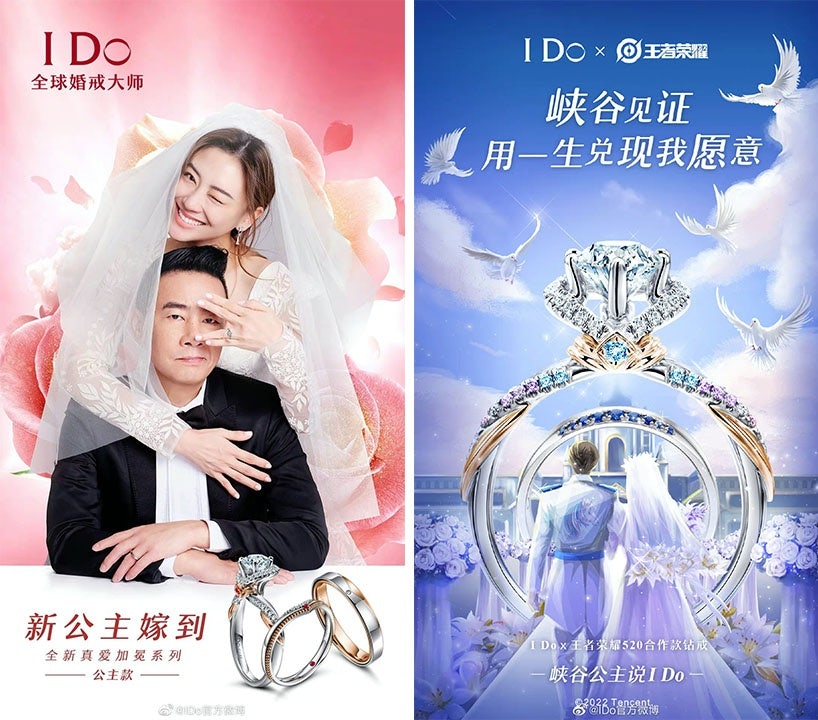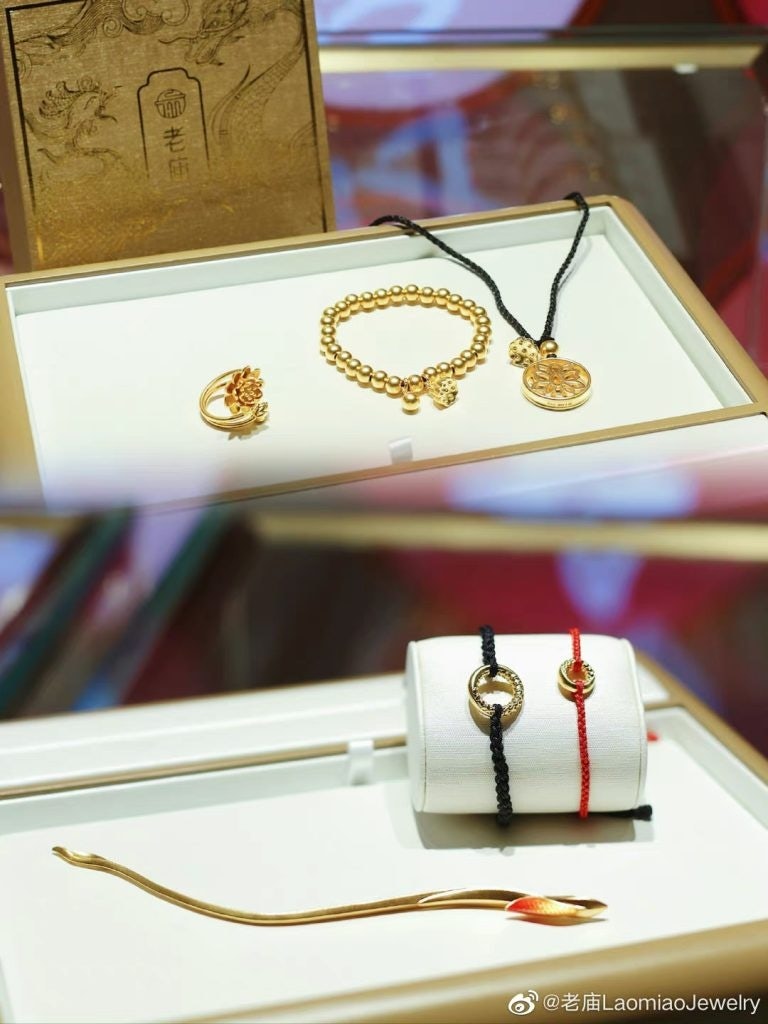Only a few years ago, I Do was flourishing. The China-based affordable diamond brand had become a household name largely due to its successful marketing efforts since its launch in 2006. Last December, Hong Kong idol Jordan Chan and his wife Cherrie Ying became I Do ambassadors in celebration of their 12th marriage anniversary.
In recent months, I Do has frequently collaborated with celebrities and KOLs such as fitness guru Liu Genghong, and even partnered with the mobile game Honor of Kings to unveil limited-edition rings.

It came as a major surprise to many when the diamond company suddenly filed for bankruptcy in early January 2023. According to Chinese corporate database Tianyancha, I Do’s parent company Hengxinxili has filed for bankruptcy reorganization. On January 13, Hengxinxili issued a statement to announce that multiple Chinese courts had placed high consumption restrictions on the company and its CEO Li Houlin for failing to make payments to other companies as stipulated by contracts.
Information from China’s judicial enforcement public database also shows that the company has paid 1 million (6.6 million RMB) upon receiving compulsory execution court orders since October 2022. Hengxinxili’s public financial record shows that it had 250 million (1.67 billion RMB) worth of debt in the first half of 2022 and currently maintains a 39.4 percent debt ratio.
We take a look at the unexpected downfall of I Do and examine some of the insights that can be gleaned from this event.
Precious stones with humble beginnings#
Founded in 2006, the brand contrasts strongly with more established jewelry houses in China. It specifically tailors its styles to young Chinese consumers and its stores feature modern interior decor. With the majority of its products priced at thousands of RMB, I Do is also within the purchasing power of most millennial and Gen Z consumers. In fact, I Do has completed nine rounds of financing in its 15-year existence, including investment from renowned parties such as CITIC Securities and Shenzhen-based jewelry brand Chow Tai Seng.
As noted above, a large part of I Do’s success can be attributed to its ability to capitalize on China’s fan economy. It frequently places its products in romantic movies and has even sponsored eponymous songs sung by household idols such as Eason Chen and Karen Mok.
However, it soon became evident that Hengxinxili could not sustain its high marketing costs, which reached 97.4 million (655 million RMB) in 2021 and accounted for 30.6 percent of its entire annual expense. In the first half of 2022, Hengxinxili’s revenue fell to 93.4 million (628 million RMB), a 42 percent year-on-year decrease, while its profit dropped by 88.6 percent compared to the same time last year. In October, claims of I Do informally laying off a large number of its staff and delaying salary payments for months started to emerge.
Diamond rings no longer shine in the eyes of Chinese consumers#
The most obvious reason for I Do’s downfall is the reduced demand for diamond rings during the pandemic. Until China relaxed its pandemic control measures in December 2022, large gatherings such as wedding ceremonies were explicitly discouraged. Meanwhile, the COVID-induced economic slump deterred many consumers from purchasing non-essential items.
In November 2022, China’s consumer confidence index was a mere 85.5, down 28.5 percent year-on-year and even lower than the 86.8 points during the Shanghai lockdown in May. The latest figure from the People’s Bank of China shows that nationwide savings in 2022 reached 3.9 trillion (26.26 trillion RMB), a 1 trillion (6.6 trillion RMB) increase over 2021, reflecting a more conservative consumer sentiment.
At the same time, I Do suffers from its almost exclusive focus on diamond rings. China’s plummeting marriage rate, which dropped by 7.5 percent year-on-year to 5.45 million in the first three quarters of 2022, is shrinking the size of I Do’s potential clientele. In addition, more and more Chinese Gen-Z consumers are achieving their “carat freedom” by selecting lab-grown diamonds. A lab-grown diamond sells for about one-third the price of a natural one in China and also appeals more to those who are sustainability-conscious. In 2021, sales of lab-grown diamonds on Tmall grew by 72 percent year-on-year while sales of natural diamonds did not witness noticeable growth.
Looking ahead at China Gen Z’s changing values and needs#
Ironically, traditional gold jewelry, which I Do seeks to distinguish itself from, is winning back consumers. For instance, Laomiao Guyun, a guochao series launched in 2018 by renowned gold house Laomiao Jewelry, combines modern design with traditional gold craftsmanship. Laomiao Guyun recorded a revenue of over 680 million (4.6 billion RMB) in the first three quarters of 2022.

The upcoming Chinese New Year has also prompted many consumers to purchase gold jewelry. A go-to gold market in Beijing sold out its Year-of-the-Rabbit-themed pieces a week ago. By contrast, the price of affordable luxury brands’ diamond rings tends to drop significantly in resale. In a news article last week, a Chinese jewelry resale analyst states that most wedding rings will lose 50-60 percent of their value because of the limited quality of their diamonds.
In the latter half of 2022, gold jewelry pieces actually picked up steam as Chinese consumers flocked to them for store-of-value purposes. According to the World Gold Council, China’s demand for gold in Q3 2022 reached 163 tons, a 58 percent increase over Q2 and also higher than the pre-pandemic Q3 2019 level.
Although I Do might still exist after the bankruptcy reorganization of its parent company, it should not count on Chinese consumers’ revenge spending for relief. For China’s diamond ring brands, including I Do’s chief competitor Darry Ring, the key to their future relevance lies in whether they can expand their product categories and convey their value to young Chinese consumers beyond marriage and weddings.

